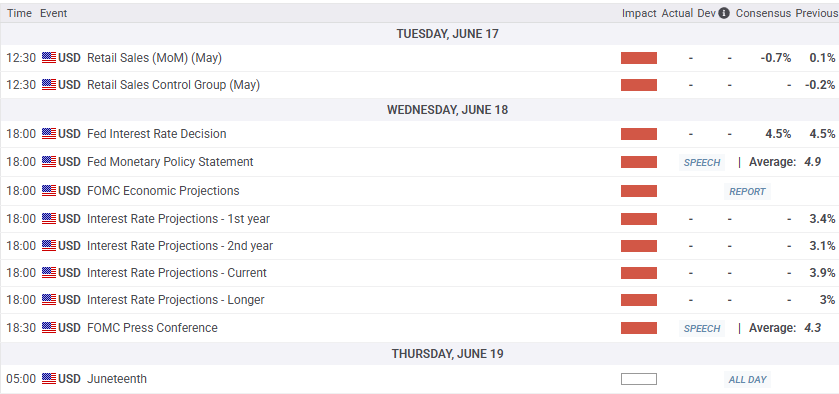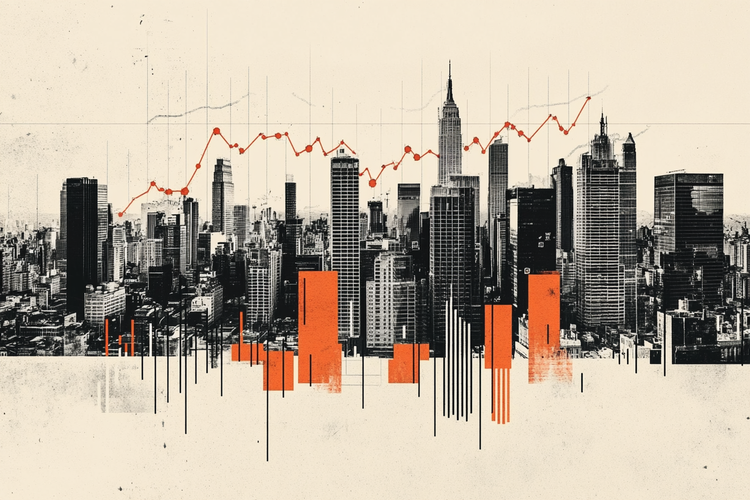- The Dow Jones climbed around 300 points on Monday, challenging the 42,500 region.
- Investors are betting on some sort of resolution in the Israel-Iran conflict that cropped up last week.
- Despite a positive tilt to equities, trade concerns and Middle East conflicts are keeping bullish momentum capped.
The Dow Jones Industrial Average (DJIA) found firmer footing on Monday, kicking off the new trading week on a high note and paring away most of the late-week losses that pushed indexes into the red last Friday. Israel launched strikes against Iranian targets under the auspices of denying Iran access to nuclear weapons. Israel is one of only four countries to not sign the Nuclear Non-Proliferation Treaty, and is also not a party to the Treaty on the Prohibition of Nuclear Weapons.
Despite Israel’s strikes quickly spiraling out into barrages of missile launches between Iran and Israel that continued through the weekend and into Monday, investors are still banking on a potential ceasefire, or at least a cooling of constantly rising Middle East tensions. Equities rallied on Monday following headlines from the Wall Street Journal that Iran was “open” to the idea of engaging in peace talks with Israel. However, the Iranian government, through the Qatari state-controlled media outlet Al Jazeera, denied the reports as false. Undeterred, traders are hedging their bets that a resolution will be found, rather than continuing to boil over into a widespread conflict.
Aggregated consumer sentiment figures rose for the first time in almost seven months last week, adding further pressure on the long side. Rebounding consumer sentiment comes at a time when Federal Reserve (Fed) policymakers are still locked in “wait and see” mode on possible economic fallout from the Trump administration’s whiplash trade “policies”, which primarily consist of threatening and then canceling widespread import taxes.

Fed on deck, another rate hold expected
The Fed is poised to make another interest rate call this week; the central bank is broadly expected to stand pat on interest rates once again, a move that will likely draw further ire from President Donald Trump. Trump has expressed frustration at multiple stages at the Fed’s unwillingness to ease interest rates as he scrambles to find a way to make federal debt more manageable; Trump’s bespoke “Big Beautiful Budget Bill” is expected to add trillions to the federal deficit over the next decade, despite campaigning on a platform of eliminating the federal debt overhang “within months” of taking office.
According to the CME’s FedWatch Tool, interest rate traders are currently pricing in 70% odds of at least a quarter-point rate cut in September. A follow-up rate trim is expected in either October or December, with odds flipping between the two on a day-by-day basis.
Read more stock news: IBM stock leads Dow Jones higher
Dow Jones price forecast
Monday’s bullish push has pared back some of last week’s late losses, pushing the Dow Jones Industrial Average back above 42,500. However, the major equity index remains embroiled in a consolidation zone that has plagued the Dow since mid-May.
The Dow Jones found fresh highs north of the 43,000 major price handle last week before Middle East headlines knocked investor sentiment lower, taking DJIA bids with it. The Dow still has a major technical floor priced in from the 200-day Exponential Moving Average (EMA) near 41,800, and the 50-day EMA is in the process of confirming a bullish cross of the long-run moving average.
Dow Jones daily chart

Economic Indicator
Fed Interest Rate Decision
The Federal Reserve (Fed) deliberates on monetary policy and makes a decision on interest rates at eight pre-scheduled meetings per year. It has two mandates: to keep inflation at 2%, and to maintain full employment. Its main tool for achieving this is by setting interest rates – both at which it lends to banks and banks lend to each other. If it decides to hike rates, the US Dollar (USD) tends to strengthen as it attracts more foreign capital inflows. If it cuts rates, it tends to weaken the USD as capital drains out to countries offering higher returns. If rates are left unchanged, attention turns to the tone of the Federal Open Market Committee (FOMC) statement, and whether it is hawkish (expectant of higher future interest rates), or dovish (expectant of lower future rates).
Read more.
Next release:
Wed Jun 18, 2025 18:00
Frequency:
Irregular
Consensus:
4.5%
Previous:
4.5%
Source:
Federal Reserve

